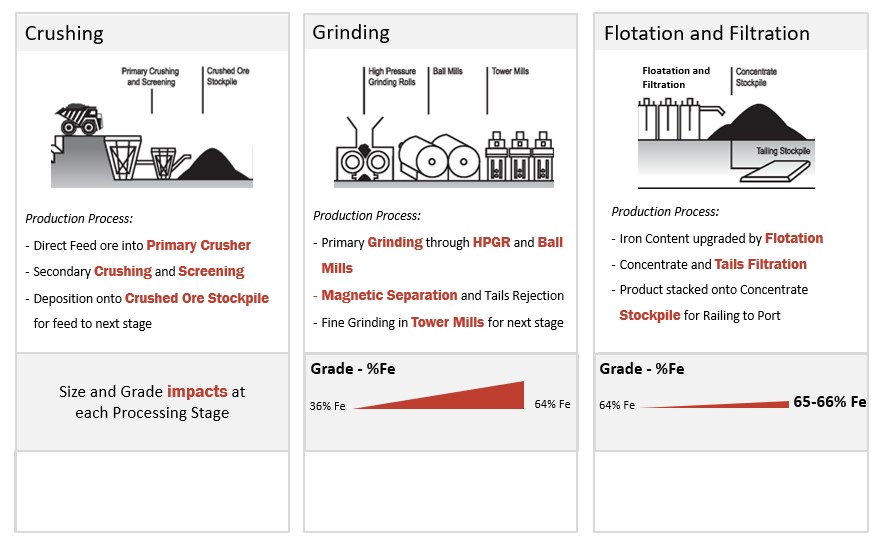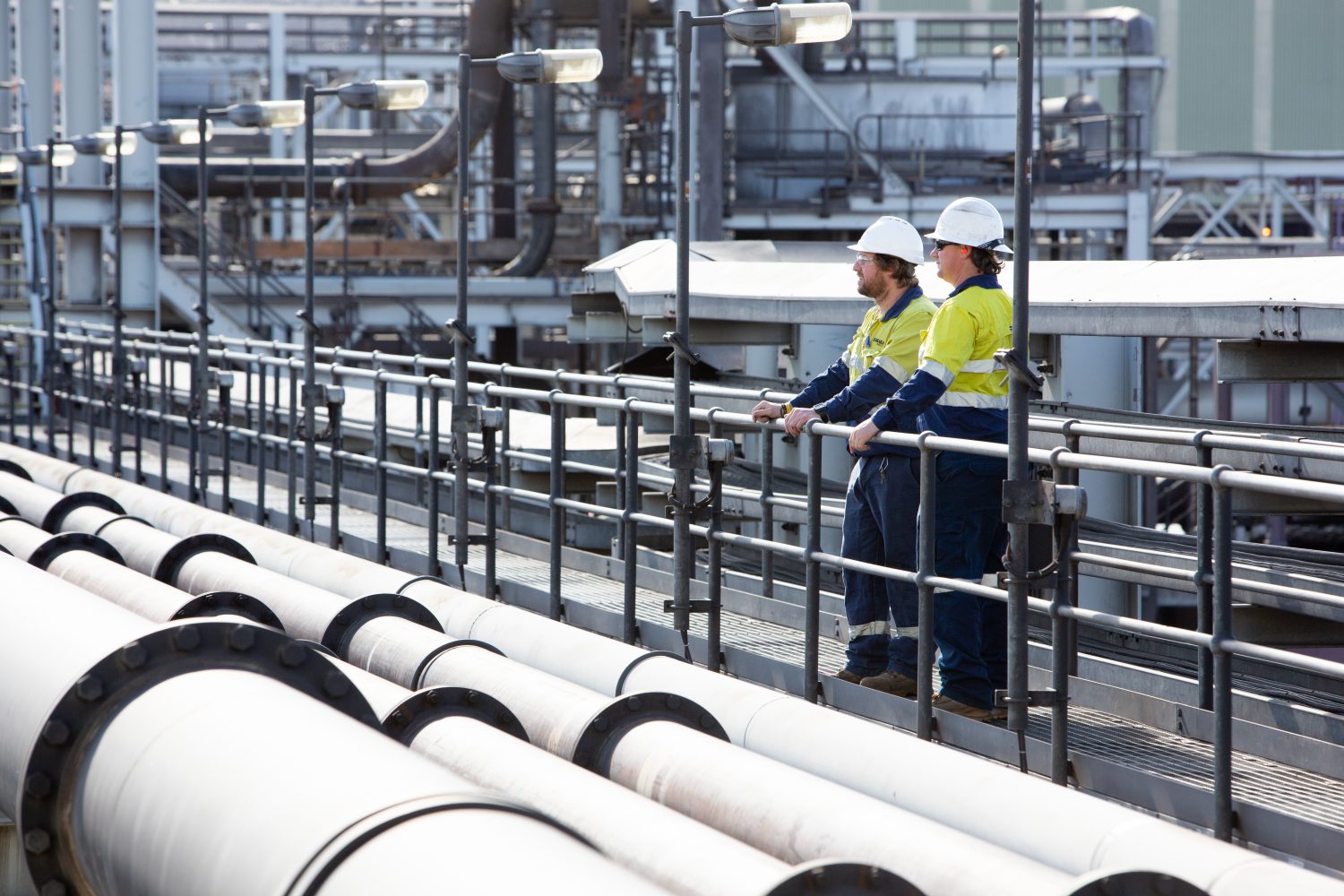Mining
Karara is the largest mining operation in the Mid West region and one of only two operating magnetite mines in WA. The Karara Iron Ore Project is located 220 kilometres south-east of Geraldton in the Shire of Perenjori.
Magnetite ore is mined from a large scale (12 m bench height) open pit mine in a traditional load and haul mining operation using conventional face shovels, large capacity (230 tonne) off-road haul trucks, a fleet of large diameter blast-hole drill rigs and a range of ancillary mobile mining equipment.
Karara has grown the project to a multi-billion tonne mineral resource, which is capable of sustaining a long life of mine (+30 years). The project comprises a large, complex and fully integrated mining, processing and transport logistics operation designed to produce 8 Mtpa of premium, high-grade magnetite concentrate for export to China to our offtake partner Ansteel for use in steelmaking.


Magnetite
Karara comprises a large-scale, long-life magnetite orebody amenable to bulk mining and processing.
Magnetite ore has lower iron content (34-36% Fe) than hematite ore (58-64% Fe). It must be upgraded by a complex ore treatment process (beneficiation) to produce a high-grade (+65% Fe) concentrate for steelmaking.
Its magnetic properties enable magnetite to be refined to a premium concentrate product that is globally accepted and highly sought after as to produce high quality, low impurity steel.
The treatment and beneficiation of magnetite ore requires crushing, screening, high-pressure grinding, magnetic separation, filtering and drying to produce a premium, high iron grade concentrate with very low impurities.
Further processing by Karara’s customers involves the agglomeration and thermal treatment of concentrate to produce pellets, which can be used directly in either a blast furnace or direct reduction steelmaking plant.
The additional “up-front” and higher costs involved with the extra processing required to produce magnetite concentrate is offset by the significant price premiums that high grade, high-quality concentrate commands from steel mills, compared to conventional (hematite) benchmark iron ore products.



MAGNETITE PROCESS







